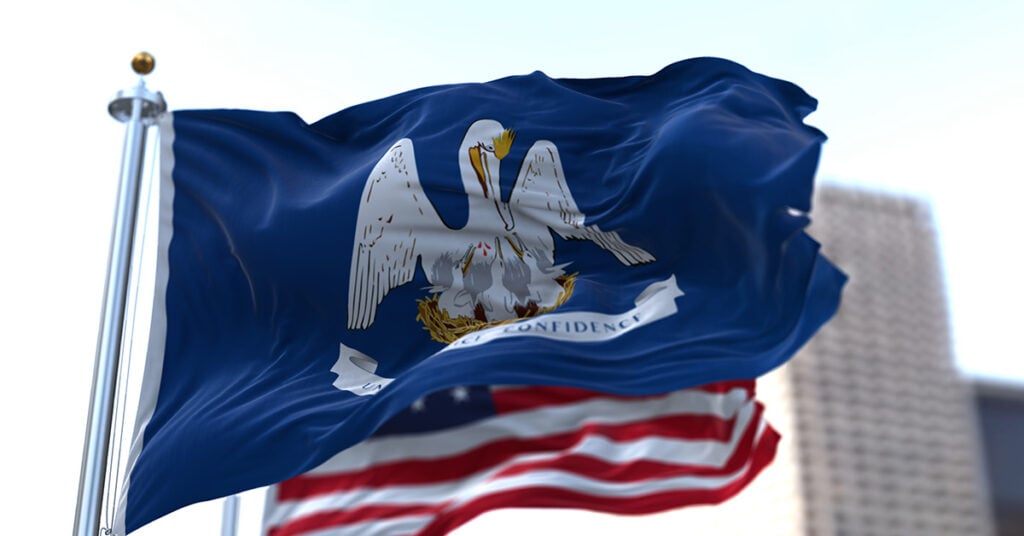By Andrew Vanacore, NOLA.com | The Times-Picayune
In pushing for an end to income taxes in Louisiana, Gov. Bobby Jindal is calling upon an economic theory about taxes and economic growth that is almost four decades old. So you might assume the case for or against “supply-side” or “trickle-down” economics would be about settled by now.
It is not.
Since at least the late 1970s, proponents have been pushing the idea that tax cuts will produce a jolt of economic growth, taking up the cause in a handful of state legislatures recently with statistics that show big gains in the nine states that already don’t tax income.
Supply-side doubters are unimpressed, suggesting that other factors play more of a role in the economy than tax policy, and that even if growth has been faster in those nine states, it has not outpaced population growth, leaving the average family no better off.
These competing claims mean lawmakers in Baton Rouge this month will have to ponder a high-stakes decision over Jindal’s tax plan with two opposing teams of prognosticators in their ears, neither of which is ready to give an inch.
“The evidence is as clear as anything,” said Arthur Laffer, who helped lay the theoretical groundwork for President Reagan’s tax cuts in the 1980s and sees the resurgence of supply-side ideas among GOP governors being driven by the same forces as before.
“It’s all coming back again under the same conditions — a failed economy by an administration that is raising taxes,” Laffer said, alluding to President Obama.
On the other side is a collection of researchers who see the supply-side comeback as driven mainly by Laffer himself, and accuse him of using misleading statistics in annual reports for the American Legislative Exchange Council, archenemy of liberal groups everywhere.
chart-taxpolicy-040513.jpg View full size
“If you look at the serious academic literature on whether income taxes affect economic growth, the heavy preponderance shows they don’t,” said Michael Leachman of the Center on Budget and Policy Priorities, one of several left-leaning think tanks and nonprofits that have tried to debunk Laffer’s work.
To begin sorting out why the two sides remain so far apart, it’s worth looking at Texas, whose economy in the past decade has fared well enough to be touted by some as a “miracle.”
Texas — along with Alaska, Florida, Nevada, New Hampshire, South Dakota, Tennessee, Washington and Wyoming — has no personal income tax. Between 2001 and 2010, its gross state product climbed nearly 58 percent, while the number of non-farm jobs has climbed almost 8.7 percent. Even tax revenue in Texas, despite the absence of an income tax, rose 65.1 percent, since the state does collect sales and property taxes, levies which are thought to be less harmful to economic growth.
On the other hand, look at Maine, which has one of the nation’s highest income tax rates on top earners, 8.5 percent. Maine saw economic growth over the same period of only 35.4 percent; the number of jobs actually dropped 2.5 percent and government revenue rose only 32.6 percent.
Take any state without an income tax, compared with any of the nine states that have the highest rates, and a similar pattern shows up, leading Laffer and others to conclude that states in the middle, including Louisiana, have a clear example to follow.
Unless you look at a different set of numbers entirely.
The economy in Texas has certainly grown, but so has the number of people in Texas. So, some economists argue, it is important to look at whether or not the average Texan family has seen their slice of the economic pie get any bigger.
Look at Texas and Maine again. Per-capita gross state product in Texas grew 6 percent between 2002 and 2011, compared with only 0.4 percent in Maine. But median household income in Maine grew by 7.9 percent and dropped in Texas by 2.3 percent. Meanwhile, the unemployment rate in Maine over the same period averaged 5.8 percent, compared with 6.2 percent in Texas.
Chart these statistics for the nine states without an income tax alongside the nine states with the highest rates, and no clear picture emerges about which group is doing better. In fact, Oregon, with the country’s highest income tax rate on its wealthiest residents, had the by far fastest growth in per-capita gross state product.
Laffer’s critics aren’t surprised by those figures because they see other economic factors as more important than taxes.
By this thinking, Texas has seen its economy and population grow because rising energy prices have buoyed the state’s oil sector, and relatively stringent mortgage regulations spared Texas the disastrous housing bubble.
Because those factors didn’t exist in the other nine states without an income tax, they haven’t fared as well. Jindal has cited Laffer in pointing out that more than 60 percent of U.S. jobs created in the past decade appeared in the nine no-tax states, but nearly half of the overall job growth was in Texas alone. Six of those nine states accounted for 2 percent of overall job growth or less, according to the Institute on Taxation and Economic Policy.
“If the point of your research is to try and figure out how income taxes are affecting state economic growth, you’d think there would be some kind of effort to control for other factors,” said Carl Davis, one of ITEP’s senior analysts.
Laffer concedes “there is no consistent relationship between per-capita income and income taxes” but argues that rising per-capita figures at the state level can be misleading because it may only mean that people are fleeing a state more quickly than its economy is shrinking.
He insists the preponderance of evidence is still on his side, and that critics have offered no better alternatives for boosting growth. Local companies have seen their stock prices perform better in states without income taxes, corporate headquarters are more prevalent and higher-income individuals are more likely to move in, Laffer said.
In any case, Jindal has taken the case for doing away with income taxes beyond the strictly monetary, making the point that drawing more people to Louisiana should be a goal in itself. In other words, even if the average income doesn’t rise, at least the state’s children won’t have to flee toward Texas for economic opportunities.
“It might help bring my kids and my grandkids home, and that is what I really want.”
Stumping for his plan in Alexandria the other day, Jindal said, “One of the things we hear from families all over the state is, ‘Yes it will be good for me on my taxes, but what is even more exciting is that it might help bring my kids and my grandkids home, and that is what I really want.'”
The governor also seems to be hedging his bets somewhat with a plan you might call “supply-side lite.” He would ax the state’s corporate and personal income taxes but make up for the loss of revenue with a higher, broader sales tax.
A strict supply-sider would argue that dropping the income tax will pay for itself as people become wealthier and end up paying more in taxes anyway, even though they are paying a smaller portion of their income.
It’s not clear, though, if that theory will hold, given that it typically assumes the income tax still exists, just at a lower rate. Louisiana, like Texas, will have to rely instead on sales and property taxes.
Also, unlike the president, governors are typically required to balance their budgets, so if tax receipts come in below expectations, it could mean painful mid-year budget cuts.
Given that political reality, Laffer and the Exchange Council have given their blessing to the type of plan Jindal is pushing, on the theory that taxing income hurts growth more than taxing consumption. Gov. Dave Heinman of Nebraska has proposed the same idea.
That path carries risks too, of course, and Jindal has drawn skepticism from those who would otherwise love to see income taxes go away — business leaders, who might see their bills go up because the sales tax would grow to encompass more of the services they pay for, like accounting.
Given the clout of Louisiana’s business lobby, in fact, it could very well be supply-side proponents — ironically — who are the likeliest to sink the governor’s plan.





